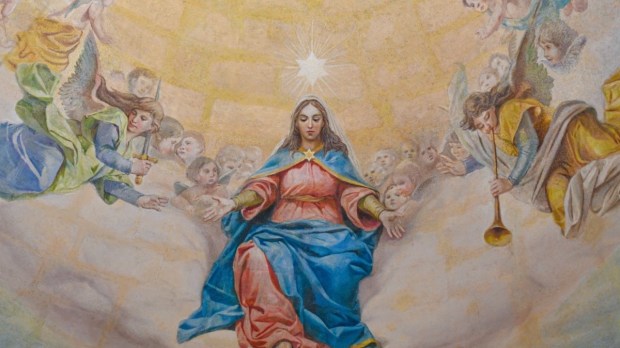Lenten Campaign 2025
This content is free of charge, as are all our articles.
Support us with a donation that is tax-deductible and enable us to continue to reach millions of readers.
Stella Maris Parish Church is the matrice of the Sliema region in Malta, being the oldest parish church, going back to 1878. Sliema got its name thanks to a chapel on Tigné point, dedicated to the Virgin Mary, Star of the Sea (Stella Maris), erected in 1601. The chapel served as a beacon and a reference point to the fishermen who lived in the area, and sailors on galleys of the Order of Saint John the Baptist.
“Sliema” probably relates to the first words of the Hail Mary prayer, which in Maltese is “Sliem Għalik Marija” (Hail Mary). While at sea, as soon as the seamen got the first glimpse of the chapel, they saluted the Virgin Mary with a “Sliem Għalik Marija!”
In the past Tigné point was known as il-Qortin but got the namesake La Punta di Dragut (The Point of Dragut), as during the Great Siege of 1565, the Turks had built an artillery battery on the advice of the Corsair Dragut. He was hit by a bomb fired from Fort Saint Elmo and died on the spot. In fact, the church’s epithet was the “Chapel on Dragut’s Point.” The petite chapel was closed in 1659, due to lack of necessities, but was rebuilt in 1741 under the title il-Madonna tas-Sliema. However, it was annihilated by Napoleonic troops during the French blockade of 1798.
Our Lady of Safe Haven and Divine Grace
In 1803 the church was rebuilt further inland — plans began in 1801 and it was completed in 1803 — and still stands today, under the title of Our Lady of Safe Haven, also known as Our Lady of Divine Grace (il-Madonna tal-Grazzja). A certain Giovanna Salvaloco donated the land for the new chapel, and the government forked out the money for its construction. This coincided with the arrival of the British, who had an interest in keeping the peace.
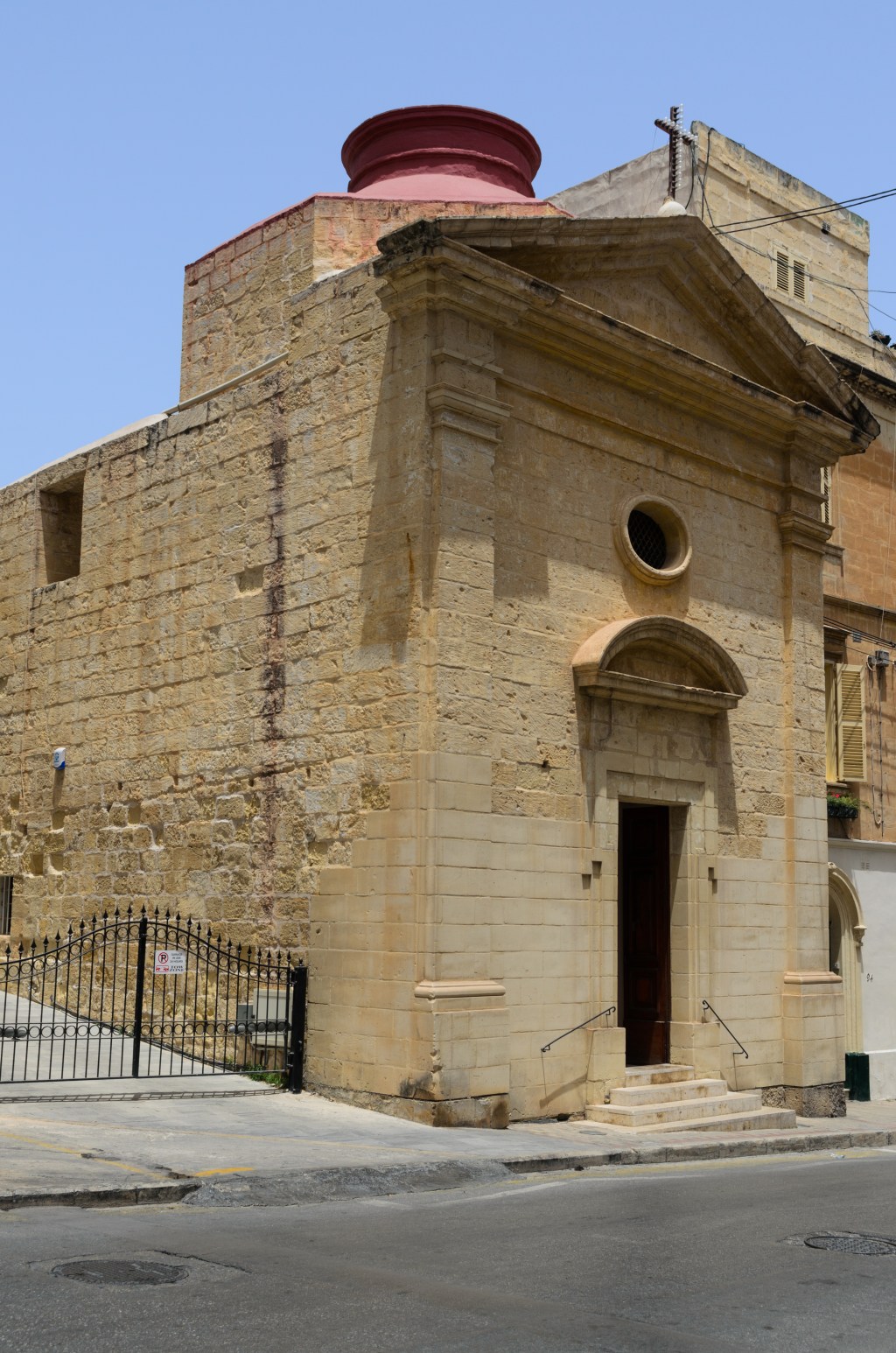
Until the mid-19th century, this was the only church in the Sliema region. Every Sunday, a priest would journey from Birkirkara to celebrate Mass. Records show that he would not start until all the flock was present. The bells of the chapel would toll when criminals were hanged in Floriana, across the creek, to remind people to pray for the condemned. At the time, executions were held in the open, and were visible from the Chapel.
The beauty of this chapel lies in its simplicity. It might be small, but its allure is heightened not only by its spiritual and historical heritage, but also due its paintings, which are thought to have been brought over from Tigné. Presently, only the altarpiece is in the chapel, since another two have been moved to the exhibition rooms adjacent to the Stella Maris Parish Church. The altarpiece is a copy of a Raphael in the Capitoline Museum in Rome, but the painter is unknown. The other two paintings are beautiful creations of Mattia Preti, one depicting the Guardian Angel and the other the Flight of the Holy Family into Egypt.
Sliema becomes a parish
As the population of Sliema began to grow, the inhabitants of the small hamlet petitioned the religious authorities for the construction of a larger church to suit their spiritual needs. The Curia agreed on condition that the new church would be dedicated to St. Paul the Apostle. For this purpose, the Diocese of Malta also donated the land for the new church.
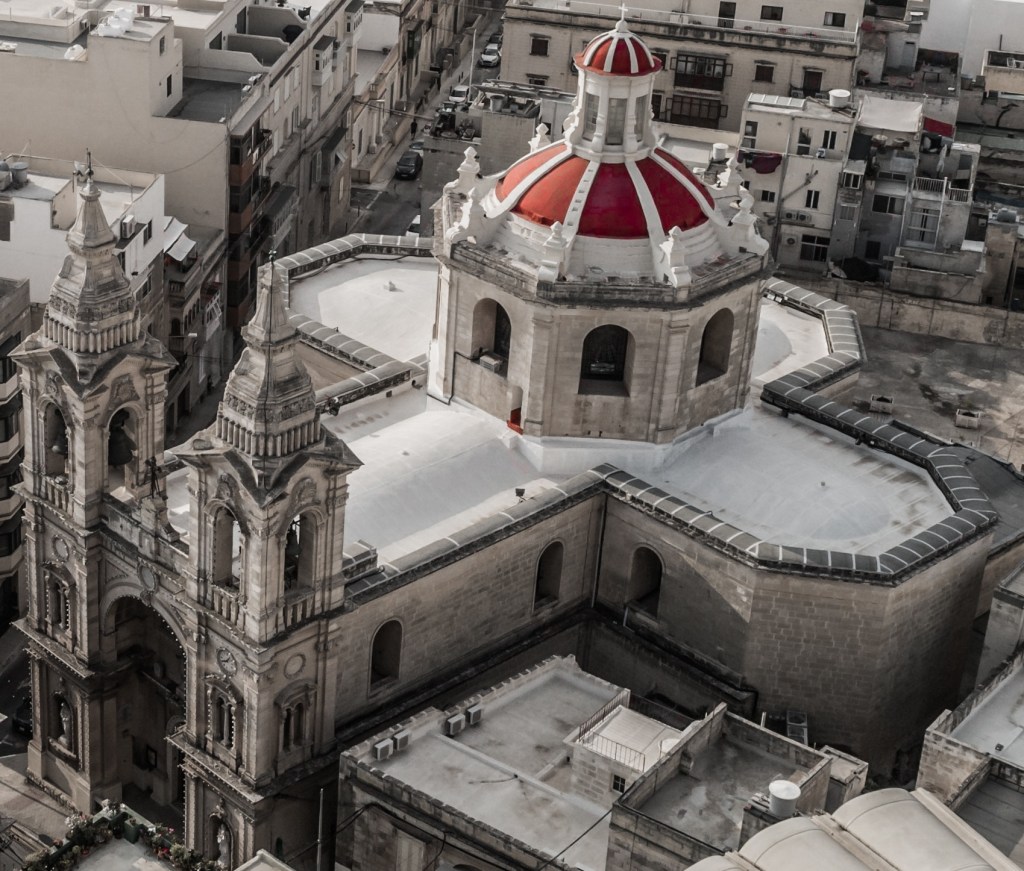
However, the villagers had a fervent devotion towards Our Lady and wished their main church to be dedicated in honour of their Patroness. They had it their way, and construction of the new church began April 29, 1853, right in front of the church of Our Lady of Safe Haven. It was dedicated to Our Lady, Stella Maris, like the original little one on Tigné point, and opened for public worship August 11, 1855.
Yet, the population of Sliema continued to increase rapidly and soon the church had to be enlarged. By 1877, the church reached its current size, crowned with a majestic dome. The works were completed in time for a petition collected among the inhabitants of Sliema asking for their church to be erected to the rank of parish, as the town was still under the jurisdiction of the parish of St. Helen’s in Birkirkara. This was granted on Christmas Day of 1878. In 2018 the Parish was honored by the title of “Arċipretali” (Archpriestial).
The Marian art
Throughout the years this church has literally developed into a vast repertoire of Marian devotional art, among which are the glorious apse painting by the Maltese artist Giuseppe Calì and the titular statue of Our Lady, Stella Maris, that was brought from Paris in 1891.
However, this does not mean that the church, and its exhibition rooms, are not brimming with other art dedicated to Christ and the saints. These range from elaborate sculptures and statutes to magnificent mural paintings and reliquaries =- and more.
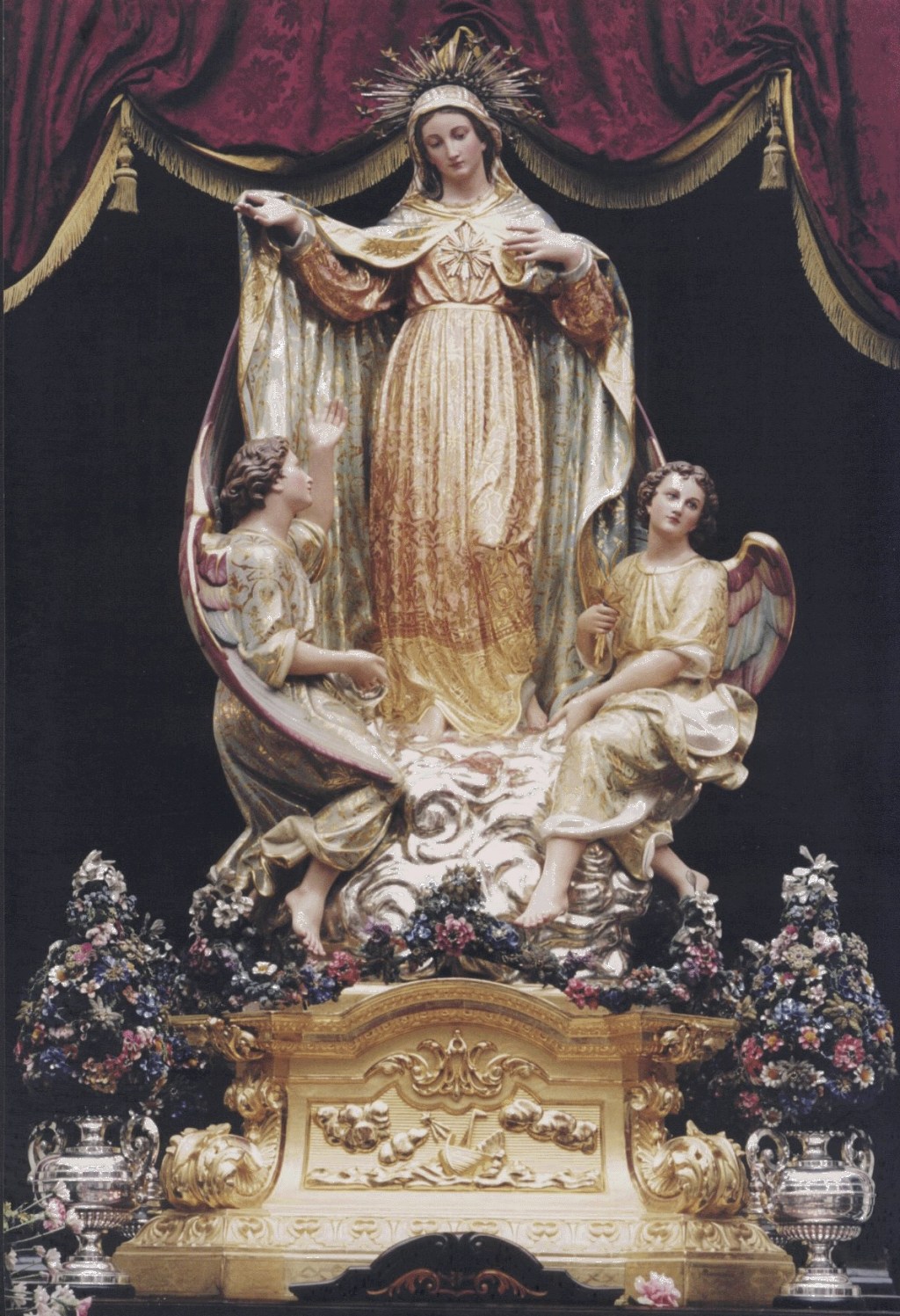
The apse is an example of Cali’s fully academic sweetened style of Romanticism. It was painted in oil on a preparation of plastered stone, which is indeed a typical technique he used in mural works. The painting represents the Virgin as the protectress of the seas. It also depicts Pope Leo XIII next to the fallen figure of Heresy, and allegorical images representing the four continents converted to Christianity.
The titular painting, the “Virgin of Porto Salvo,” is the oldest and most prestigious in the church. It was painted in 1583 in the Italian Mannerist style; however, it is of unknown authorship. Sir Ferdinando Inglott had bought it from the Valletta Domenicans for 6 sterling to replace the previous titular by Raffaele Caruana, which is hanging in the sacristy.
The left side chapel houses a set of eight carved wood panels depicting the sorrows of the Virgin, which have their own side chapel with the same dedication. The Italian artist Ferdinando Stafflessar of Ortisei produced them in 1952. These were donated by the Confraternity of Our Lady of Sorrows and replace the first set, going back to 1878, unfortunately destroyed during the War.
The left-hand side nave of the church houses an altar also dedicated to Our Lady of Sorrows, while the right one has an altar of Our Lady of the Rosary. Both were made by Montecatini-Edison of Viareggio, Italy, and donated by the Agius family of Sliema.
Stella Maris Parish also has two sets of exquisite paintings related to Our Lady’s life. One set (six paintings facing the nave) is from the late 19th century, by another Italian artist, Filippo Fortunato Venuti – they depict Her Nativity, Presentation at the Temple, The Pieta, The Dormition, The Nativity of the Lord, and the Child Jesus disputing in the Temple.
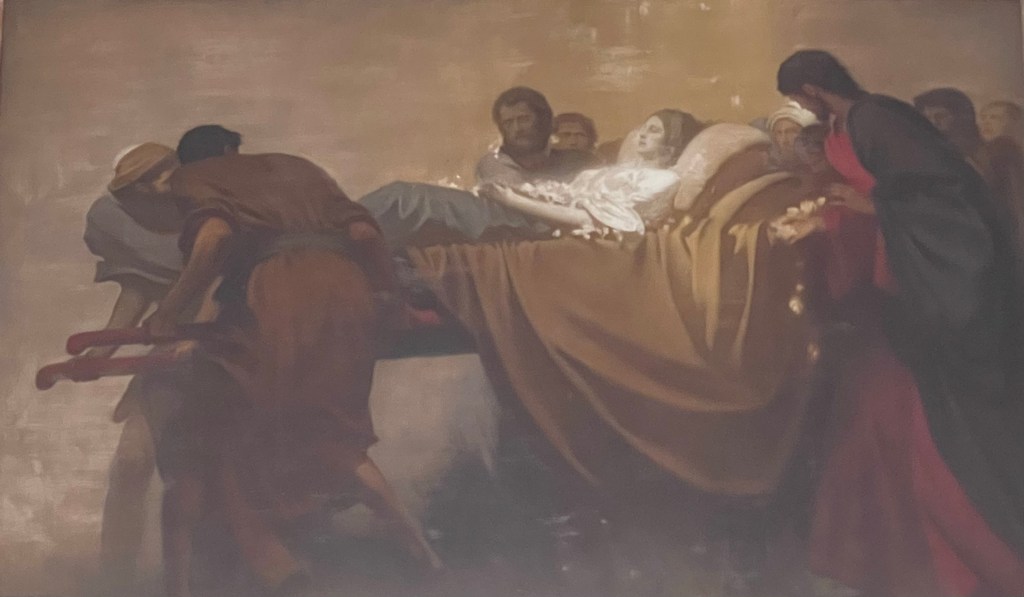
The other set (12 paintings in the two side chapels and the choir) is by another Italian artist, Mario Gaffaro Rore of Milan. Commissioned by the parish priest G. Inguanez in 1956, they feature The Dormition, The Deposition of the Lord, The Crucifixion, The Way to Calvary; The Escape of the Holy Family to Egypt, The Visitation, The Presentation of the Lord, The Annunciation, The intercession of Our Lady during the Battle of Lepanto, Our Lady of the Rosary (altarpiece), Our Lady of Lourdes, and the Marriage of Mary and Joseph.
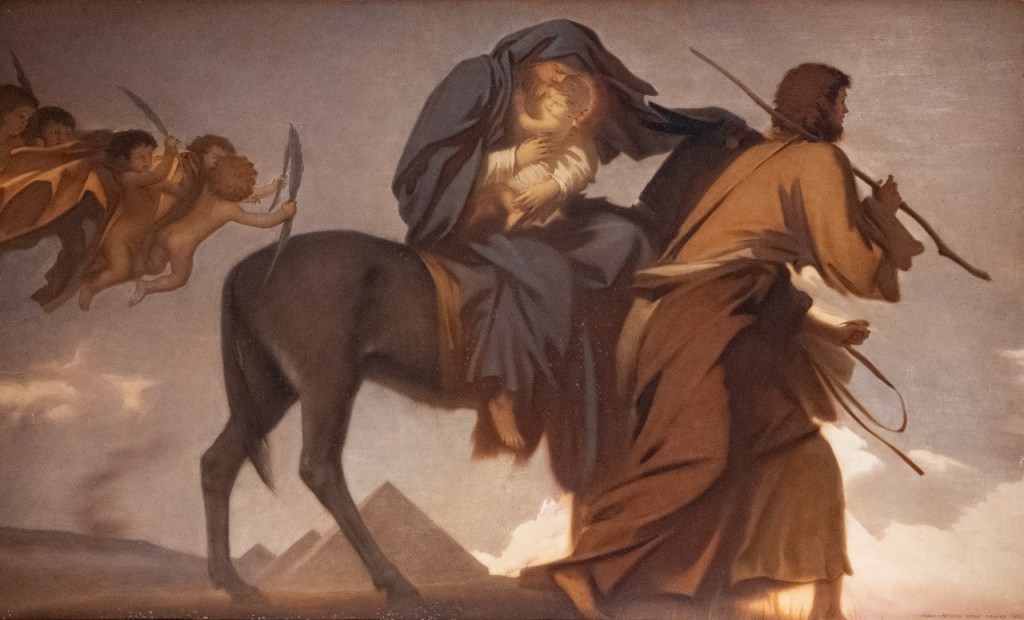
The church also offers five magnificent effigies representing various titles of the Blessed Virgin, including the titular Our Lady, Star of the Sea. The others portray Our Lady of Fatima, Our Lady of Sorrows, Our Lady of the Rosary and Our Lady of Lourdes.
And this is not all, because even the stained-glass windows remind us of Sliema’s Patroness – every window has the symbol of Stella Maris, a huge star over a turbulent sea, and is inscribed with one of the titles attributed to the Blessed Virgin Mary.
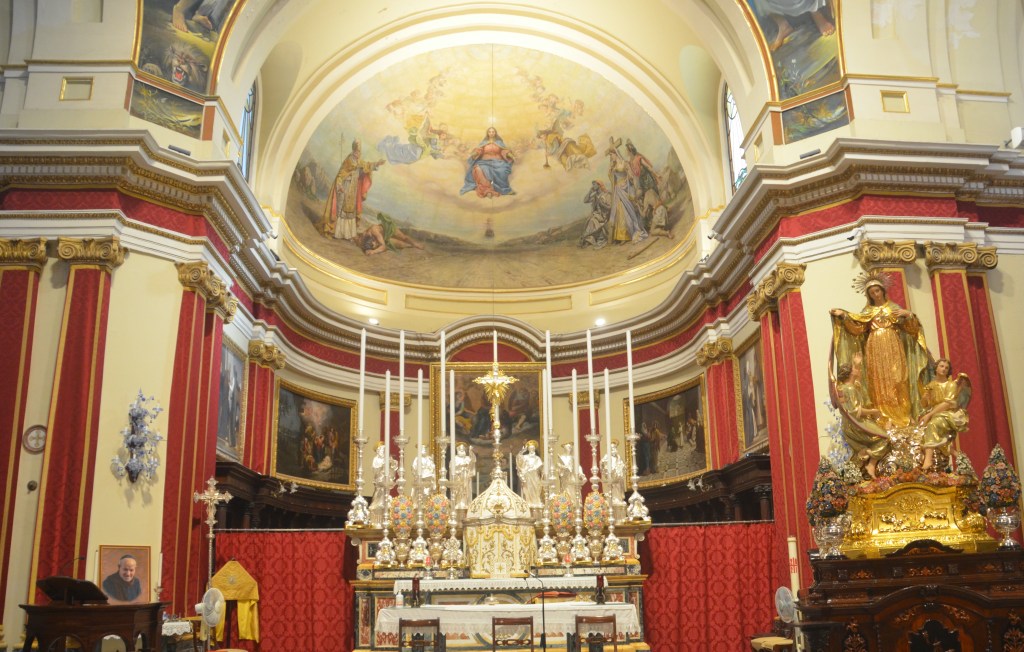
Final thought
For centuries, evidently since the very origin of Sliema, the Blessed Virgin Mary has always been in the locals’ hearts. The very name of this hamlet, today the most urbanized area of the Archipelago, is unquestionable proof that Sliema was born in the soul of Mary.
The Sliemizi prayed to Mary in times of trouble, rejoiced with Mary in times of plenty, and praised Mary for Her continuous intercession, and for Her Motherhood. Since time immemorial, every moment, every occasion has been a right moment, a right occasion to cry out “Sliem Għalik Marija!“
I heartfully thank Victor Calleja for the information he compiled and provided to assist me in writing this article. Victor is the curator and guardian of Stella Maris Parish Church and exhibition rooms.
Other references
Busuttil R. Il-Madonna tal-Grazzja – Tas-Sliema (Our Lady of Divine Grace – Sliema). Kappelli Maltin
Sliema History. Malta Local Government
Borg A. P. The Chapel of Our Lady of Divine Grace. The Unexpected Traveller – Stuff you don’t find in guidebooks, August 19, 2019
